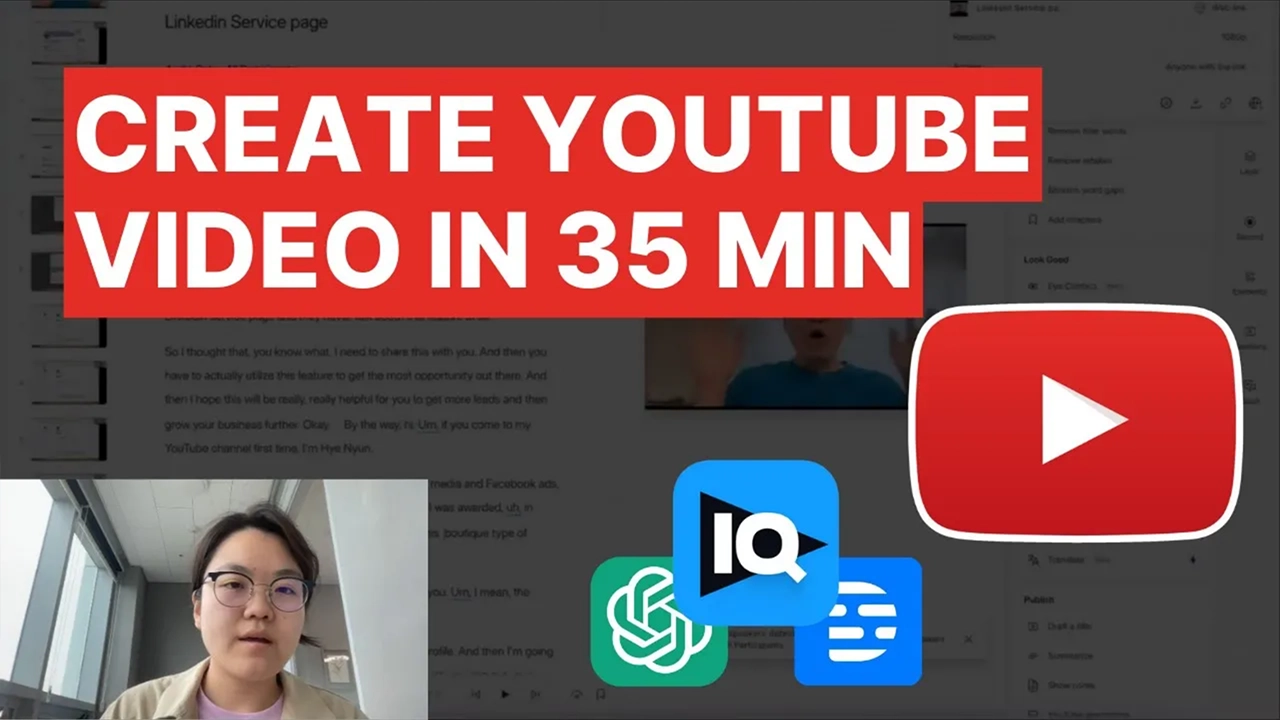Expanding your ecommerce brand into South Korea can be one of the most profitable moves you make—but it’s also one of the most complex. If you want to succeed, you need to understand Korean marketing strategies and adapt to local consumer behavior.
As someone who has helped a diverse range of companies and brands in Korea, in this guide, I’ll walk you through the essential steps to effectively market your ecommerce brand in South Korea. You’ll get a clear understanding of the platforms, strategies, and tactics that are crucial for success in this market. Let’s dive in!
Do you absorb information better through video? Click on the thumbnail below to enjoy this blog’s video accompaniment!
1. Understanding the Korean Marketing Landscape
South Korea is a unique market. If you’re used to marketing in other regions, you might think you can just replicate your strategies. But trust me, Korean marketing is different. Misunderstanding these differences can be a major reason why international brands fail to gain traction here.
The first thing you need to know is that local platforms matter in Korea. Naver, Kakao (linked to Daum), and others are the main players in Korea’s digital ecosystem, and they dominate the way consumers discover and engage with brands. In fact, Naver is not only the leading search engine but also a platform for shopping, blogs, and even social content. If your brand isn’t well integrated into Naver, you’re missing out on a massive chunk of the market.
But it’s not just about platforms. Korean consumers are incredibly savvy and brand-conscious, so you need to be thoughtful about your approach. They value authenticity and local relevance—so what works in the U.S. or Europe may not necessarily work here… Content must resonate deeply with the local culture, and that includes the language, humor, and trends that shape day-to-day life.
- Naver: The most essential search engine in South Korea. If you're not visible here, you're missing a huge opportunity.
- Kakao Talk: This is where most Koreans engage with brands—direct communication with your customers happens here. It’s not just about having a presence on social media; it’s about being personal and responsive.
To succeed, you have to integrate with these local platforms, not just the global ones like Google or Facebook.
If you need complete optimization for your website or blogs, download our free guide on Korean SEO right here.
2. The Power of Social Media: Facebook, Instagram, and YouTube
For ecommerce brands, social media is one of the most powerful tools you have. But the key is strategic use—not just posting for the sake of posting. Instagram is widely used, but the most successful brands know how to target their audience effectively.
Don’t overthink it—video content drives engagement and helps build trust with your audience in ways that images and static ads can’t.
If possible, repurpose your short-form content to Naver Clip, TikTok, YouTube Shorts, Instagram, and Facebook—literally everywhere. By using Metricool (one of our favorite tools), you don’t have to manually schedule them.
3. Naver: The Heart of Search Marketing in Korea
When I say Naver is crucial, I mean it. Naver is the search engine in Korea, and it’s where Korean consumers go to research products, read reviews, and shop. If your ecommerce brand isn’t optimized for Naver, you’re missing out on a huge chunk of traffic.
- Register your website on Naver. This is the first step to getting your site visible in searches.
- Use Korean keywords that are highly relevant to your brand and products. The better you optimize for local search, the more likely your content will appear on top.
- Naver Blogs: Naver allows you to create blog content that is indexed in its search engine. This can significantly increase your visibility. Content on Naver Blogs (If you register a blog post to a SEO local tool) can also be found in Google search results, providing double the exposure.
Don’t underestimate how much traffic Naver can drive. It’s critical to your success in South Korea.
4. Korean Marketplaces: Where the Real Action Happens
South Koreans are serious online shoppers, and they love local ecommerce platforms. Smart Store, Coupang, and Market Kurly are the key marketplaces where you should list your products.
Powered by Naver, Smart Store is the largest marketplace in Korea. If you’re launching your brand, this is the platform to get started on.
Known for its competitive pricing, Coupang is perfect for attracting price-conscious consumers. You’ll need to adjust your pricing strategy to stay competitive in this space.
Known for its focus on premium, high-quality products and fresh delivery, Market Kurly appeals to consumers who prioritize convenience and quality. If your product is in the premium or specialty category, this is a great platform to showcase it.
If you’re looking to list your products for the first time and assess demand as a small business, starting with Coupang could be a wise decision. Other platforms may require more resources and partnerships to get started.
Don’t ignore these local marketplaces; they’re where most Koreans do their shopping.
Wanna know where your competitors are listed? Check out this guide: ‘How to List Your Products in the South Korean Marketplace’!
5. Influencer Marketing: Big Names to Scale, Micro-Influencers to Build Authentic Connections
In South Korea, influencer marketing is an incredibly powerful tool, but it’s important to adapt your strategy depending on your stage of growth. When launching your brand, big-name influencers can help you make a splash and quickly gain visibility and credibility in the market.
However, as you scale, micro-influencers also become invaluable. They offer more genuine and relatable content, and their followers tend to be loyal, which results in higher engagement rates. These influencers are more in tune with their communities, making their recommendations feel more authentic.
So, start with the big names to establish a presence and build credibility quickly, but as your brand grows, tap into micro-influencers to foster deeper, more authentic connections with your audience at the same time.
6. Customer Service: Get Personal with Kakao Talk
In South Korea, customer service is everything. If you want to build trust and engage with your customers on a deeper level, you need to be on Kakao Talk (or at least Instagram).
Kakao Talk is the platform where Korean consumers expect brands to provide real-time customer service. Setting up a business account on Kakao Talk is something that brands can’t ignore nowadays. Here, you can answer questions, offer product support, and even give updates on promotions or new arrivals—all in a personalized manner.
It’s not just about making sales; it’s about building a relationship. Use Kakao Talk strategically to humanize your brand and offer personalized, fast customer service.
During the launching phase, we recommend starting with Instagram rather than Kakao Talk, as it requires less time and effort to manage. However, as your brand grows, having a Kakao Talk channel to connect with Korean consumers will foster better relationships.
7. Email Marketing: Unlocked Opportunities here
While social media dominates a lot of the conversation around digital marketing, email marketing remains a powerful tool—especially in Korea. Many brands overlook it, and that’s your opportunity.
Email marketing in South Korea offers an effective way to nurture leads and maintain relationships with existing customers. Focus on value-driven content, exclusive promotions, and personalized recommendations to keep your subscribers engaged. And jump in now when many Korean brands overlook it!
If it’s not possible to manage email marketing and you’re using Smart Store or Kakao Talk, make sure to set some regular notifications or messages to nurture your audience!
Conclusion: Ready to Tap Into the South Korean Market?
Navigating the South Korean market is a challenge, but with the right strategy and understanding of local platforms, your ecommerce brand can thrive. Focus on building a strong presence on Naver, using social media to engage your audience, and listing your products on local marketplaces.
If you’re ready to expand into the South Korean market, my team and I are here to help. We specialize in helping international brands enter the South Korean market with tailored strategies from market entry to scaling your business with the right campaigns.
Let’s connect and create a strategy that will set you up for success in one of the most dynamic markets in the world.
Hyein
At HY MARKETING, we help international brands succeed in South Korea, Japan, and English-speaking markets by specializing in tailored social media strategies and Facebook ads. Feel free to follow us on other social platforms or connect with us for more tailored guidance.
your next big win?
This playbook cuts through the noise and gives you the blueprint to enter with impact.



